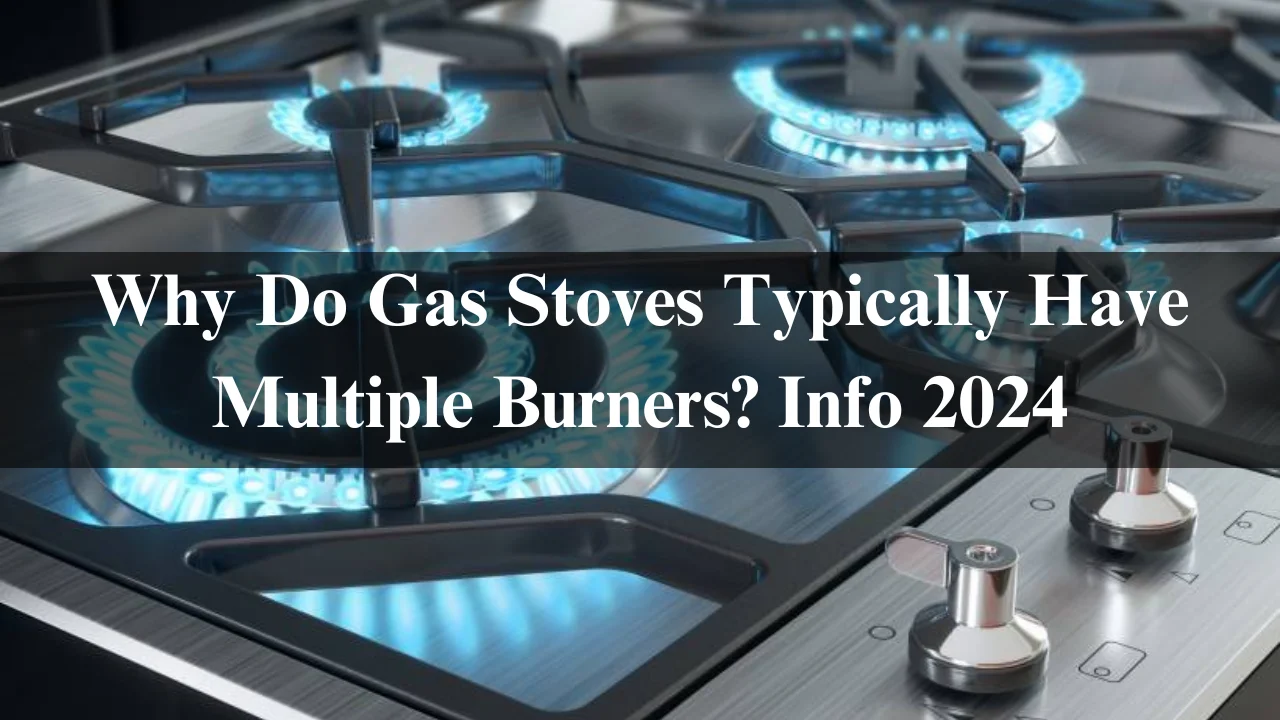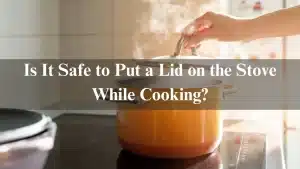When it comes to cooking, precision and versatility can make all the difference. Enter the gas stove—an indispensable kitchen appliance that has been a favorite for generations. But have you ever stopped to wonder why gas stoves typically feature multiple burners?
Each burner serves a unique purpose, allowing home chefs to tackle various tasks simultaneously. This flexibility not only saves time but also enhances culinary creativity. Let’s dive into the components of a gas stove and explore how each part contributes to its functionality, especially those handy burners!
Table of Contents
What Is A Gas Stove?
A gas stove is a cooking appliance that uses natural gas or propane as its fuel source. Unlike electric stoves, which rely on heating coils, gas stoves provide instant heat by igniting the gas at each burner. This feature allows for precise temperature control and quick adjustments.
Gas stoves are typically found in homes and commercial kitchens in various sizes and configurations. They range from compact models for small spaces to expansive units designed for gourmet cooking.
The design of a gas stove often includes multiple burners, catering to different pot sizes and cooking techniques. From simmering sauces to searing meats, these appliances make multitasking effortless. Gas stoves are favored for their efficiency and the unique flavor they can impart to food through open flames.
Parts Of A Gas Stove
A gas stove has several essential parts that create an efficient cooking experience. Each component plays a unique role and contributes to the overall functionality.
The burner is perhaps the most recognizable part. It’s where the flames emerge and heat your pots and pans. Different burners offer varying levels of heat intensity, catering to different cooking needs.
Next is the nozzle, which controls gas flow into each burner. This precision helps regulate flame size for optimal cooking temperatures.
The control knob allows users to adjust flame strength with ease. A simple twist can mean a gentle simmer and a vigorous boil.
Don’t overlook the pan support; it securely holds cookware above the burner while ensuring even heating throughout.
Beneath these components lies the spill tray, designed to catch drips or spills during cooking and make cleanup much simpler later.
The stove body houses all these elements and connects them seamlessly. The gas pipe supplies fuel from your home’s source directly to each burner as needed for consistent performance.
Burner
The burner is the heart of a gas stove. It’s where all the magic happens, transforming raw heat into culinary creation. Each burner delivers a specific flame intensity tailored for different cooking needs.
Burners come in various sizes and designs. Large burners produce high heat, ideal for boiling or frying. Smaller ones provide gentle flames, perfect for simmering sauces or melting chocolate.
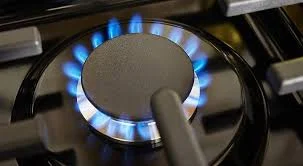
Most stoves feature multiple burners to accommodate different dishes simultaneously. This versatility allows home cooks to sauté vegetables while boiling pasta, enhancing efficiency in meal preparation.
Each burner operates independently with its control knob, giving you complete command over your cooking environment. Whether you’re an amateur cook or a seasoned chef, having multiple burners elevates your kitchen experience significantly.
Nozzle
The nozzle is a crucial component of a gas stove. It delivers gas to the burners and ensures that the gas flow is controlled and directed precisely where it’s needed.
Typically situated near each burner, nozzles are designed to fit tightly, preventing any leaks. This tight seal is vital for safety and efficiency during cooking.
Different types of nozzles can accommodate varying sizes of flames. Some people prefer larger flames for quickly boiling water, while others may need smaller flames to simmer delicate sauces.
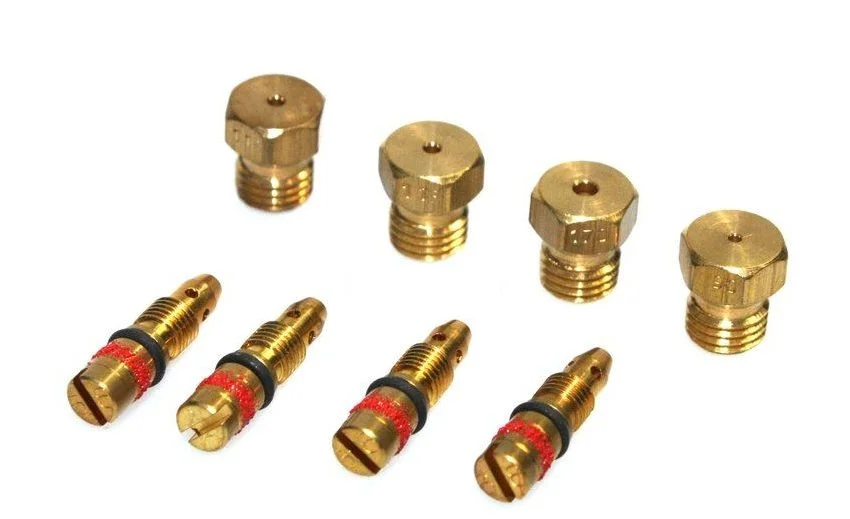
Moreover, proper maintenance of the nozzle can significantly enhance performance. Regular cleaning helps avoid blockages that could disrupt the flame quality or even pose hazards in the kitchen. In essence, this small part significantly impacts cooking functionality and safety standards within your home environment.
Control Knob
The control knob is a small yet mighty component of a gas stove. It may seem simple, but it is crucial to your cooking experience.
Located on the front or side of the stove, this knob allows you to adjust the flame’s intensity. A gentle turn can shift from simmering delicate sauces to boiling pasta quickly.
Many models feature clear markings, making it easy to understand heat levels. Some even come with a push-to-turn mechanism for added safety. This prevents accidental ignitions and provides peace of mind while cooking.
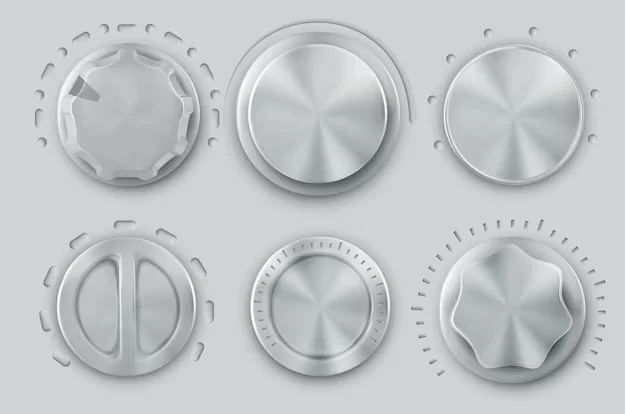
A well-designed control knob enhances usability and comfort in the kitchen. Its tactile feedback lets users know they’re making adjustments without noticing what’s cooking. With just one flick or twist, culinary creativity is at your fingertips!
Pan Support
The pan support is an essential component of a gas stove that often goes unnoticed. It provides the necessary stability for your cookware while cooking. With it, pots and pans would wobble, making it easier to achieve even heating.
The pan support is designed to withstand high temperatures and is typically made from durable materials like cast iron or stainless steel. Its gridded design allows flames to spread evenly underneath, ensuring efficient cooking.
Moreover, this feature also plays a role in safety. A well-designed pan support prevents spills and accidents by keeping cookware securely in place. This means less mess on your stovetop and more focus on creating delicious meals.
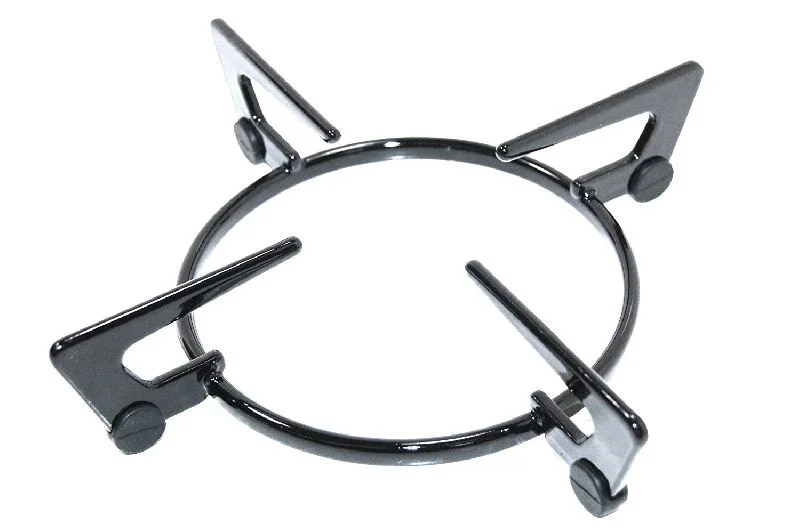
Cleaning might seem daunting with all those grooves, but regular maintenance can keep them in great shape. Just a quick scrub after use will do wonders!
Spill Tray
The spill tray is a crucial component of any gas stove. It sits directly beneath the burners, ready to catch any spills or drips during cooking. This prevents messes from reaching the inner workings of the stove.
Spill trays made from materials like stainless steel or enamel are designed to be easy to clean. Their smooth surfaces allow quick wiping after use, saving time for kitchen cleanup.
Many models feature removable trays that can be taken out and washed separately. This added convenience ensures your stove remains tidy and prolongs its lifespan by protecting sensitive parts below.
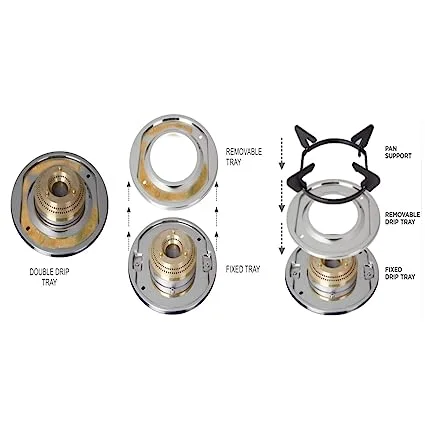
A well-maintained spill tray keeps your cooking area cleaner and enhances safety. By containing food debris and liquids, it simultaneously minimizes fire hazards while cooking on multiple burners.
Stove Body
The stove body is the sturdy framework that supports all other gas stove components. It acts as the foundation, providing stability and durability. It is typically made from metal or high-quality materials and is designed to withstand constant heat and wear.
This part also houses essential features like storage compartments or ventilation systems. Depending on the design, some stove bodies have aesthetic finishes that enhance kitchen decor.
Moreover, the stove body’s insulation properties help maintain optimal cooking temperatures while minimizing heat loss. This efficiency saves energy and ensures even cooking results across different burners.
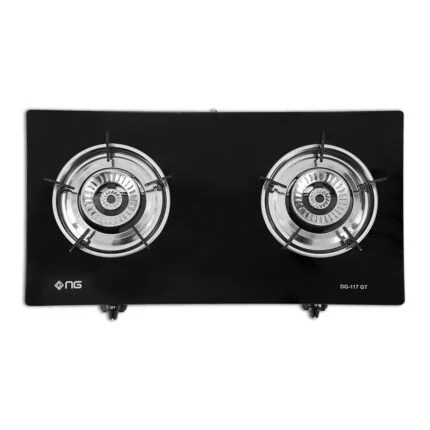
Maintenance is straightforward since most surfaces can be easily wiped down after use. A well-constructed stove body contributes significantly to both functionality and longevity in your kitchen setup.
Gas Pipe
The gas pipe is a crucial component that connects your stove to the main gas supply. It delivers gas to each burner, ensuring they ignite properly and provide consistent heat. The quality of this pipe is essential for both performance and safety.
A well-maintained gas pipe allows for efficient operation of all burners on the stove. Any leaks or damages can lead to dangerous situations, so regular checks are advisable. Proper installation by a professional ensures that every meal you prepare will be safe and effective.

Understanding how each part works together enhances your cooking experience. With multiple burners, meal preparation becomes more enjoyable and efficient. Whether simmering sauces or boiling pasta, having various flames at different intensities gives you control over every dish you create in your kitchen.
Understanding Burners on Gas Stoves
Burners are the heart of any gas stove, driving heat to your cookware. They come in various sizes and designs, each serving a specific purpose in the cooking process.
At their core, burners consist of holes that allow gas to escape. These flames ignite an intense heat source for pots and pans. The diameter of each burner typically affects its strength; larger ones produce higher temperatures for boiling or frying.
In addition to size variations, different types of burners cater to unique cooking needs. Some are designed for rapid heating, while others provide gentle simmering options—perfect for delicate sauces or soups.
Understanding how these elements work together can elevate your cooking experience. Knowing when and how to use each burner makes all the difference between average meals and culinary masterpieces!
How Many Burners Do Stoves Have?
Gas stoves come in various configurations, but the most common setup features four burners. This arrangement balances cooking efficiency and space management.
Some models include just two burners for compact apartments or smaller kitchens. These are ideal for minimalist cooks who don’t require extensive cooking capabilities.
Conversely, larger stoves can have six or even more burners. Professional chefs often prefer these setups to accommodate multiple dishes at once.
Additional burner options cater to different culinary needs. Some may feature specialty burners designed specifically for simmering sauces or boiling pasta quickly.
The number of burners on a gas stove is tailored to meet diverse cooking styles and preferences. Whether you’re whipping up dinner for one or hosting a feast, there’s likely a gas stove configuration that fits your needs perfectly.
Why Do Gas Stoves Typically Have Multiple Burners?
Gas stoves are designed with multiple burners to cater to diverse cooking needs. Each burner offers different heat levels and sizes, providing flexibility for various recipes.
Having several burners allows cooks to prepare multiple dishes simultaneously. Imagine sautéing vegetables on one burner while boiling pasta on another. This efficiency saves time in busy kitchens.
Another reason is the ability to control temperature precisely. Different pots and pans require varying heat levels, and having options helps achieve the perfect sear or simmer without constant adjustments.
Some gas stoves even feature specialized burners for specific tasks, enhancing versatility. Whether creating a delicate sauce or grilling meats, each burner serves a unique purpose that enriches the cooking experience.
What is the Purpose of a Dual Burner?
A dual burner offers versatility in cooking. It combines two flame sizes, allowing for precise heat control. This feature is perfect when simmering sauces or boiling water quickly.
With a dual burner, you can switch between gentle and intense heat. This flexibility makes it easier to tackle different dishes simultaneously. Imagine sautéing vegetables on one side while boiling pasta on the other.
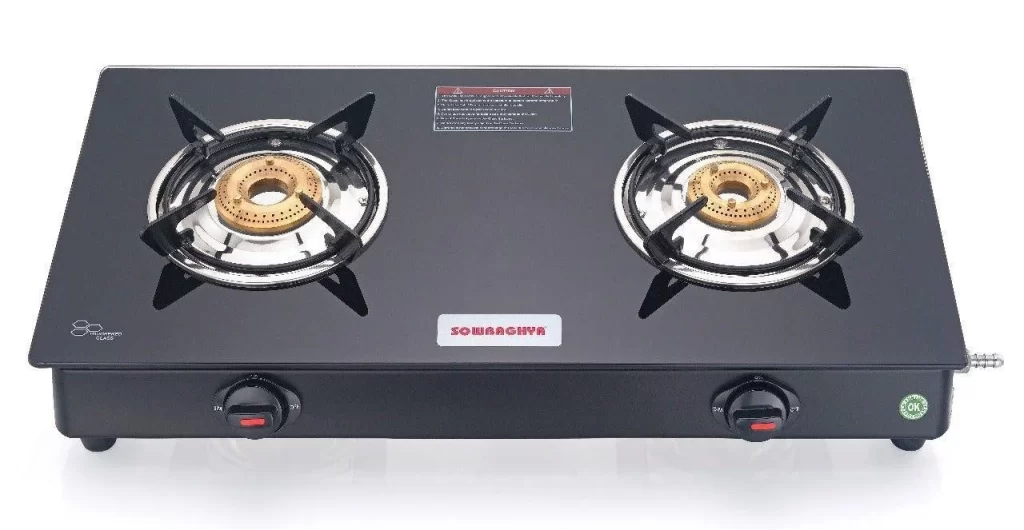
With this setup, cooking times also become more efficient. You can manage multiple pots without worrying about uneven heating or timing issues.
The design of dual burners enhances functionality and creativity in the kitchen. Experimenting with complex meals becomes seamless, as each dish gets the attention it deserves at the right temperature.
What is a Triple Flame Burner?
A triple flame burner is a powerful feature in some high-end gas stoves. It provides three separate flames that converge into one, delivering intense heat more efficiently.
This design allows for quicker cooking times, perfect for professional chefs or home cooks who want to up their culinary game. The concentrated heat helps sear meats and boil water faster than traditional burners.
Triple flame burners are ideal for dishes requiring high temperatures, such as stir-frying or sautéing. They ensure even cooking across the pan’s surface, minimizing hot spots that can lead to uneven results.
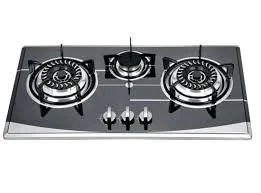
Many models also offer adjustable settings. This lets you lower the flame when simmering sauces or melting chocolate without losing control over the temperature. Versatility is key with this burner type; it adapts well to various cooking techniques and recipes.
When to Use a Double Burner?
When it comes to cooking, versatility is key. A double burner can be a valuable tool in your kitchen arsenal. You should use one when preparing dishes that require larger pots or pans, such as boiling pasta or making soups.
This type of burner provides a broader heat source, ensuring even cooking across the entire base of your cookware. It’s especially handy when simmering sauces on one side while sautéing vegetables on the other. The increased heat distribution allows for more consistent results.
A double burner also shines during holiday meal prep or gatherings. It gives you extra space and flexibility when juggling multiple dishes simultaneously. If you’re entertaining guests and want everything ready simultaneously, utilizing this feature makes life easier.
Choosing the right burners depends on what you’re cooking and how much control you need over temperature settings. With a little practice and an understanding of each burner’s capabilities, you’ll elevate your culinary skills quickly.
Types and Placement of Burners
Gas stoves come equipped with various burners, each tailored to specific cooking needs. Common types include standard burners, high-output burners, and simmer burners. Standard burners provide reliable heat for everyday tasks like boiling or sautéing.
High-output burners are designed to deliver intense heat quickly, making them ideal for searing meats or stir-frying vegetables at high temperatures. Simmer burners offer lower heat settings perfect for delicate sauces or slow-cooking dishes.
The placement of the burners also plays a vital role in cooking efficiency. Typically, front burners are larger and more powerful since they’re used most often. The back burner is usually reserved for tasks that require less frequent access or lower heat levels.
This thoughtful arrangement ensures you can easily manage multiple pots and pans without sacrificing convenience or safety while cooking delicious meals!
Which Type of Burner is Best for a Gas Stove?
Consider your cooking style when choosing the best type of burner for a gas stove. Several options are available, each serving a distinct purpose.
Standard burners are versatile and ideal for everyday tasks like boiling water or simmering sauces. They provide even heat distribution and are reliable for most home cooks.
High-output burners are for those who enjoy stir-frying or searing meats. These powerful units generate intense heat quickly, making them perfect for achieving restaurant-quality char.
For precision cooking, look at dual-flame or multi-ring burners. They offer both high and low settings, allowing you to easily switch from rapid boiling to gentle simmering.
Consider efficiency as well. Some modern designs focus on energy conservation without compromising performance. Selecting the right burner can elevate your culinary prowess significantly.
What is the Difference Between a Front Burner and a Back Burner?
The front burner and back burner serve distinct purposes in your cooking experience.
Front burners are typically larger and provide higher heat output. They are ideal for boiling water or searing meats, allowing for quick results when needed. Their placement makes it easy to stir, flip, or check on food.
Back burners tend to be smaller and have lower heat settings. They are perfect for simmering sauces or keeping dishes warm without additional cooking. The distance from the front can help prevent splattering while maintaining even temperatures.
Many home cooks appreciate having both types available. This versatility allows you to multitask while simultaneously preparing different meal components. Understanding their functions enhances culinary creativity in every kitchen setup.
Why Do Stoves Have Big Burners in Front?
Big burners in the front of gas stoves serve a specific purpose. They provide intense heat for cooking larger pots and pans. This design is especially useful when preparing meals that require high temperatures, like boiling pasta or searing meat.
Having these powerful burners within reach makes it easier to manage your cooking process. You can quickly adjust heat levels without reaching across other burners, enhancing efficiency during meal preparation.
Moreover, big front burners allow for better visibility while you cook. You can easily monitor simmering soups or sautéing vegetables, ensuring nothing burns or overflows.
The placement also encourages multitasking in the kitchen, allowing you to prepare several dishes simultaneously with optimal performance from each burner type.
What is the Middle Burner on a Gas Stove for?
The middle burner on a gas stove serves several purposes, making it an essential feature in many kitchens. Often larger than the other burners, this central unit can accommodate various types of cookware and is designed for tasks that require more heat or space.
Many people find it ideal for cooking large meals. When simmering sauces or boiling pasta for a crowd, the middle burner provides ample room to maneuver pots and pans without overcrowding. Additionally, its position allows easier access when you need to multitask.
Some stoves even have specialized middle burners designed specifically for griddles or woks. This versatility makes them particularly useful if you enjoy diverse cooking styles or meal prep methods.
Understanding how each burner functions can greatly enhance your culinary experience. By effectively utilizing every burner—including the middle one—you’ll maximize your kitchen’s potential while easily preparing delicious meals.
How Many Burners Should a Stove Have?
The number of burners on a stove can greatly impact your cooking experience. For most home cooks, a four-burner setup is ideal. It provides enough space to manage multiple dishes without feeling cramped.
However, consider five or even six burners if you frequently entertain or cook large meals. This extra real estate allows more flexibility and efficiency when preparing complex recipes.
On the other hand, smaller kitchens may benefit from three burners. They save space while offering versatility for everyday cooking tasks like boiling pasta or sautéing vegetables.
The choice depends on your cooking habits and available kitchen space. Think about how often you cook and what types of meals you typically prepare—this will guide you in selecting the right number of burners for your needs.
Should We Buy a 3-burner or 4-burner Gas Stove?
Choosing between a 3-burner and a 4-burner gas stove hinges on your cooking habits. If you often whip up simple meals or enjoy light cooking, a 3-burner model might serve you well. It’s usually more compact, saving space in smaller kitchens.
However, if you’re the kind of cook who loves to experiment with multiple dishes simultaneously, consider upgrading to a four-burner stove. This option offers flexibility for multitasking and can significantly speed up meal prep.
Think about how many pots or pans you use at once. Investing in that extra burner could prove invaluable if your culinary endeavors regularly overflow onto every surface. Plus, larger families or those who frequently host gatherings will appreciate the added capacity for efficient cooking.
Evaluate your kitchen space, too; sometimes, an extra inch can make all the difference in fitting appliances comfortably without crowding other essentials.
Why Should We Not Use a 3-Burner Gas Stove?
A three-burner gas stove may seem sufficient for small households, but it often lacks versatility. Cooking multiple dishes simultaneously can quickly become a juggling act.
Imagine preparing a full meal—simmering sauce on one burner while frying veggies on another. The third burner might feel like an afterthought, limiting your options and slowing the cooking process.
Space is another critical factor. With limited burners, you may frequently wait for one to free up before starting another dish. This inefficiency can be frustrating during busy mealtimes or when entertaining guests.
Additionally, three burners lack flexibility for different cooking methods. If you’re passionate about culinary experimentation, this setup could hinder your creativity in the kitchen.
While compact and more affordable, three-burner stoves often compromise functionality and ease of use for those who enjoy diverse cooking styles.
Can We Keep a 4 Burner Gas Stove?
A four-burner gas stove can be a fantastic addition to any kitchen. It’s versatile enough for everyday cooking, whether simmering sauces or boiling pasta.
Keeping a four-burner stove makes practical sense if your kitchen space accommodates it. It provides ample room for various pots and pans without crowding them together.
Another advantage is the ability to cook multiple dishes simultaneously. This feature is especially beneficial during family gatherings or when entertaining friends.
However, consider your cooking habits before making a decision. If you often prepare elaborate meals requiring more than four burners, you should rethink your options.
In general, if you frequently use every burner at once, upgrading may be wise. But for most home cooks with moderate culinary demands, a four-burner gas stove will likely serve well over time.
Why Do Stoves Have Five Burners?
Five-burner stoves are a game changer in the kitchen. They provide ample cooking space, making it easier to prepare multiple dishes simultaneously. This is particularly beneficial for large families or those who love to entertain.
With five burners, you can boil pasta on one side while sautéing veggies on the other. You might even have a slow cooker going at the same time. The burners’ arrangement often includes different sizes, allowing for flexibility in pot and pan use.
Additionally, having more burners can reduce cooking times. Everything can be cooked concurrently instead of waiting for your pots and pans to swap places on fewer burners. This efficiency saves time and energy—an appealing factor for any environmentally conscious cook.
Moreover, many modern five-burner models have advanced features such as simmer settings or dual power options catering to specific culinary needs. Whether you’re an experienced chef or not, these extra functionalities make cooking much more enjoyable and less stressful.
Choosing a stove with multiple burners enhances your overall cooking experience by providing versatility and convenience in meal preparation.
Burner Usage and Preferences
When it comes to cooking, preferences vary widely among home chefs. Some love the thrill of multitasking, while others prefer taking their time with each dish. Multiple burners on a gas stove cater to both styles effortlessly.
A busy family kitchen often requires several pots and pans to be used simultaneously. One burner might be dedicated to boiling water for pasta, while another simmers a rich sauce beside it. Having multiple options allows for greater efficiency during meal prep.
Not everyone cooks the same way, either. Bakers may favor lower heat settings for precision baking, while grill enthusiasts enjoy searing meats on high flames. The varied burner sizes and outputs accommodate diverse cooking techniques.
These features empower users to explore different culinary methods without compromise. With multiple burners available, creativity in the kitchen flourishes as new recipes come alive!
How Many Burners Do Most Stoves Have?
Most gas stoves come equipped with four burners. This configuration strikes a balance between functionality and space efficiency.
However, some models offer five or even six burners. These additional options cater to more diverse cooking needs, allowing for the simultaneous preparation of multiple dishes.
You might find compact stoves in smaller kitchens or apartments. They have just two burners and serve the essential purpose with little room.
The variety in burner count reflects different cooking styles. Serious home chefs often prefer extra burners for multitasking during meal prep.
The choice depends on your culinary habits and kitchen size.
What is the Most Used Burner on a Stove?
When it comes to cooking, the most used burner on a stove often depends on individual habits and meal preparation styles. Generally, the front burners tend to see more action than those tucked away in the back. This positioning makes them easily accessible for everyday tasks.
The medium-sized burner usually steals the spotlight. It’s versatile enough to simmer sauces, boil pasta, or sautéing vegetables without overpowering them. Many home cooks find their rhythm with this size.
However, some may prefer to use larger burners when preparing family meals or entertaining guests. The increased heat can significantly speed up cooking time.
Each cook will have preferences shaped by their culinary routines and favorite dishes. Whether it’s breakfast pancakes or dinner stir-fries, personal choice is essential in determining which burner takes center stage!
Which Burner is Best for Cooking?
When choosing the best burner for cooking, it often comes down to personal preference and the type of dish being prepared. Each burner offers its unique advantages.
The standard medium-sized burner is versatile and ideal for everyday tasks like simmering sauces or sautéing vegetables. It provides consistent heat without risking burning your food.
A larger high-output burner can significantly reduce the time needed to boil pasta or steam vegetables, making it perfect for those who want efficiency in their kitchen routine.
On the other hand, smaller burners are excellent for delicate tasks such as melting chocolate or warming sauces slowly without scorching them.
Having multiple burners allows you to manage different dishes at varying temperatures simultaneously, enhancing both convenience and culinary creativity in your cooking endeavors.
Related Articles:
Does A Gas Stove Use Electricity For The Oven? In 2024
Does a gas cooktop need electricity? Complete Info 2024
Troubleshooting 5 Common Gas Cooktop Issues Latest Info 2024
Gas Cooktop Safety Tips And Precautions Complete Info 2024
Conclusion
In conclusion, gas stoves feature multiple burners to offer versatility, efficiency, and precise control in cooking. Each burner serves a unique purpose, allowing you to prepare different dishes simultaneously and making meal preparation faster and more convenient. Whether you’re simmering, searing, or boiling, the multiple burners on a gas stove are designed to meet diverse culinary needs efficiently.
FAQs
Why do gas stoves have different burner sizes?
Gas stoves have different burner sizes to accommodate various cooking needs, from simmering sauces to boiling large pots of water.
How do I know how many burners I need on a gas stove?
Consider your cooking habits and kitchen space. Most households find four burners sufficient, but those who cook frequently or for large groups may prefer six.
What’s the best way to clean gas stove burners?
It is essential to clean it regularly with a damp cloth after each use. For deep cleaning, remove the burner caps and soak them in soapy water before scrubbing.
Are gas stoves with multiple burners more efficient than electric stoves?
Yes, gas stoves generally offer quicker heat-up times and more precise temperature control, making them more efficient for cooking.

